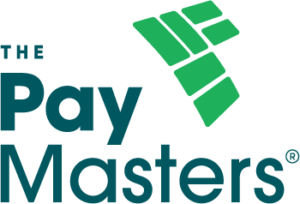Last month, Peter Thomas from Nexus Data Backup gave a talk to a group of us about the future of computing, or more specifically the development of Cloud Computing. The following are his notes. You can contact Peter on 0800 14 11 14 if you wish to discuss this article and/or Online Data Backups.
These are the guys we use to ensure your data is backed up off-site everyday and believe us, it works.
What is Cloud Computing?
There are several definitions for cloud computing, but I think the simplest one is like this. “Making your computing environment someone else’s problem.”
Here are some examples of Cloud Services:
- Nexus Backup!
- Salesforce.com (+ Several other CRM software)
- Websites / Blog sites
- Google Ap’s
- Gmail
- Hosted Exchange services
- Trademe
- Xero
- Any E-commerce website, that does something for you
So, why does any of this matter? Does Cloud Computing really stand to change the face of computing, or is it just a new buzz word?
I would say, undoubtedly the Cloud revolution is the most significant change in how we use, pay for and benefit from computer systems since the advent of the desktop PC. Let’s face it; computing has not really changed all that much in the past 20-30 years. The basics are still the same; we buy computers, install software and pay IT companies a fortune to keep it all running. The screens have got bigger, they’re not green anymore, but basically we still do the same things.
60‘s & 70’s: Mainframe computing and terminals
80’s, 90’s & 2000’s: Client / Server
The future: Software as a service (back to terminals…)
One of the factors driving the Cloud Computing revolution is the change in business itself. In many ways, it is a logical extension of modern business practice.
Outsourcing is the New Black
Previously, businesses would have in-house departments such as manufacturing, marketing, administration, distribution etc. Everything from the procurement and storage of raw materials through to support of the end user would be handled by the one company.
Businesses are beginning to outsource CORE processes. Examples include Pumpkin Patch, Icebreaker, Nike, Adidas etc.
A typical company now looks like this:
- Core management team
- Manufacturing partner
- Supply chain partner
- Warehousing & distribution partner
- Marketing partner
- Sales partner
- Customer service partner
Apart from their own management team, everything is outsourced. A company that would have previously had 200 employees may now just have 10 people. There are many, real companies out there that operate like that.
Previously all of these functions would have been carried out by divisions of the company. The time to take products to market were longer and the costs and overheads (investment) significantly higher.
The value of these companies related mainly to their physical assets (their ability to manufacture, warehouse and supply goods).
Increasingly, the value of a company is tied up in its Information asset. Information and Brand are the most valuable assets of a company
Now that companies are beginning to get rid of core processes, it is the knowledge that is the fabric of the company. This is the factor that sets companies apart; it is the smart companies that win.
Nexus and EzyPay are “outsource” businesses
Neither business would have existed 25 years ago – it would have been an in-house function. Businesses could still “choose” to perform these functions in-house.
Outsourcing gives these benefits
- Always done by experts
- Removes overhead
- Creates a “predictable” cost. No risk of unexpected cost
- You get to use systems/hardware/software etc that you could never afford to buy
- Focus on your core business
US Managers spend 85% of their time focused on non-core activities. This means that they only spend 15% of their time (6 hours per week) working on growth and productivity. The rest of the time is spent fighting fires, mainly in non-essential parts of the business.
NZ Businesses have been relatively slow to adopt the concept of “IP” businesses (intellectual property). A recent survey showed that NZ businesses are 45% less efficient than their US counterparts. This was partly blamed on our “number 8 wire” mentality of doing everything ourselves. It seems that what has been our strength in the past, has now become our weakness.
Software is heading in the same direction. Previously, you would buy a license for software and then you would maintain it, update it etc. The expertise for maintaining software was all in-house, or provided by a local IT provider. The concept of cloud computing has begun to change all of this.
Back to Cloud Computing
Some quick points about cloud computing:
- Sometimes known as Software as a Service (SAS)
- “Cloud” is basically a metaphor for the Internet
- On-demand computing and software
- Shifts ownership of the software to the vendor – you rent the ability to use their software
- Not a new idea (Bill Gates talked about this in 1992). John McCarthy first mooted it in 1966.
Pro’s
- Software is always up-to-date, you never need to upgrade it yourself
- Low up-front costs, pay as you go
- Lower specification computers required to run the software
- Access to a huge resource, but you only pay for the bit you use
- Less capital outlay for hardware
- Reduces barriers to entry – access to expensive software at “pay as you go” rates
- Lower maintenance costs (no need to upkeep individual copies of software)
- You always have the latest features
- Works well for disjointed workforces (multi-office)
- Good access for mobile devices
- Access from anywhere
- Easy to scale up (add more users)
- Collaborate
- 1st party collaboration (you and your people)
- 3rd party collaboration (Xero collaborates with your bank behind the scenes)
Con’s
- Requires “working” internet connection
- Can be slower (depending on connection speed)
- More difficult to customize
- Staff training is ongoing (rather than periodically)
- You have to have “faith” in the provider (they have your data)
In the early 1900’s, businesses would generate their own power via an onsite generator on generation plant. Nowadays, they plug into a grid. Cloud computing is like that grid.
It’s going to start costing money
Google has a problem. They need to start turning their software systems into revenue streams. At the moment, they are just a really big advertising company. For them, that’s way too risky. They have made a huge investment in software applications and at some point, they are going to start charging for them. Probably after you are hooked on them.
Things to watch out for:
- Blogging, Twitter, Facebook, Youtube.
- Businesses are starting to take these tools seriously as part of their marketing tactics. Communication is instant, “human” and voluntary.
- Microsoft Office Live
- Google Ap’s
- Hosted Email – lots of providers
- Gap technologies (smart phones, ipad’s)
My best advice for you to start using some of these technologies is just simply start somewhere. Get yourself a twitter account and follow some people or businesses that you find interesting.
Don’t be afraid to get your IT Company in just to talk strategy. Usually, the only time you talk to them is when something breaks. Also, see what other businesses are using. Don’t automatically buy the latest version of software without seeing if there is a better alternative. The best part about subscription services, is that you don’t have to commit a huge amount of money in order to try them out. Just pay as you go.






